How to Plant a Privacy Tree Fence
by Robert Fox
Having privacy from neighbors and street traffic is something most homeowners enjoy.
No matter how pleasant your relationship is with your neighbors, you still may not like them looking down at you while sitting in your garden from their upstairs balcony.
Having your own space is a natural desire, and it also can be useful for providing security for your property in other ways as well.
What you can do to ensure your privacy is planting privacy trees to form a natural fence that will not only limit your neighbors and street passers' view, but it has many other advantages as well such as adding a sense of symmetry to your outdoor landscaping efforts.
Contents
- Advantages of having Privacy Trees
- Privacy Tree Fence Ideas
- What are the Fastest Growing Privacy Trees?
- Privacy Trees That Grow in The Shade
- The Process of Planting
- Summary of Best Ways to Plant a Privacy Tree Fence
- Decide on the Type of Tree You Want to Plant
- Measure the Area Where You Want to Plant the Tree
- Dig a Hole That Is Twice as Wide and Just as Deep as the Root Ball of Your Tree
- Amend the Soil in the Hole With Compost or Manure
- Place the Tree in the Hole and Fill It in With Amended Soil, Making Sure to Pack It Down Firmly
- Water Generously and Keep an Eye on Your New Privacy Tree Fence!
- Conclusion
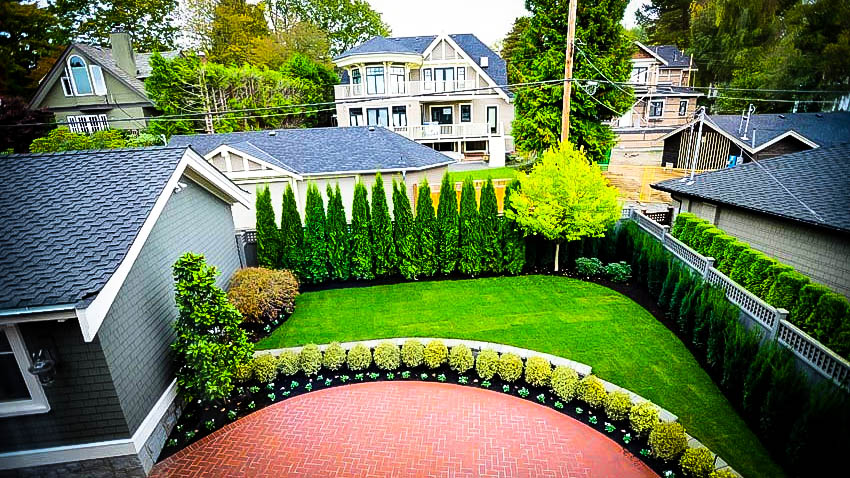
Stay with us to find out more about privacy trees. Here is what we are going to talk about today:
Before talking about how to plant privacy trees, let's take a look at all the benefits you'll get by having a natural fence.
Advantages of having Privacy Trees

- First, it'll give your garden a better look. You can choose evergreens to have a nice, green natural fence, or deciduous trees to have a colorful fence full of flowers.
- Second, it'll help reduce the street noise acting as a sound barrier.
- Third, it'll help protect your property from strong winds.
- Fourth, it'll act as a snow fence, reducing the snow.

Now that you know all the benefits you can get from planting privacy trees, you should learn few things about choosing the right trees and the process of planting.
Privacy Tree Fence Ideas

1. The Right Type of Tree

That's right. It's not just planting any tree, but a specific type according to your privacy needs. For example, deciduous trees provide a better-looking fence due to the fall colours or spring flowers.
However, they don't give a year-round screen, unlike the evergreens. If you're looking for screening all year long, reduced wind, snow, and noise, you should go with evergreen trees.
2. The Height of Your Tree Fence
Deciding the exact height of your tree fence is another important thing you should consider when planting. To get a visual image of how high you want your fence to be, place a ladder or ask someone to stand where you are planning to put the trees.
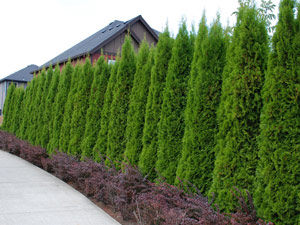
For example, if you like a tall, evergreen fence, the Green Giant Arborvitae and American Arborvitae are excellent choices. The first one can grow up to 60', while the latter from 40' to 60'.
Besides trees, there's the option of choosing shrubs. Good examples of deciduous shrubs are the fast-growing North Privet and Rose of Sharon.
If you like evergreen shrubs, then Nigra Arborvitae and Emerald Arborvitae are excellent choices. The first one can reach up to 30', whereas the latter up to 15'.
3. The Available Space
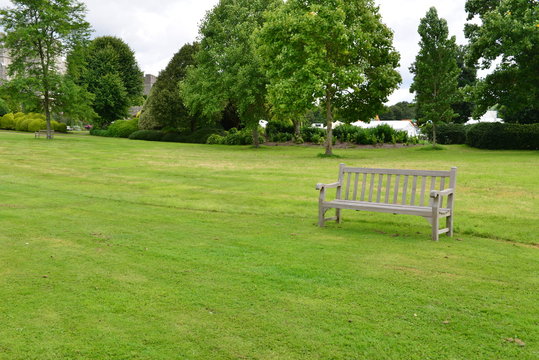
Realizing how much width you have available determines the number of rows and type of trees you'll use. So, if there's a lot of space, you might do a double or triple row.
However, a tighter place requires a certain type of trees such as the narrow American Arborvitae with a pyramid shape. It can reach up to 15' in width, but you can trim it shorter to keep it tidier.
4. Choosing the Right Tree
This involves choosing the right tree according to the available space, desired height, appearance and purpose of the natural fence.
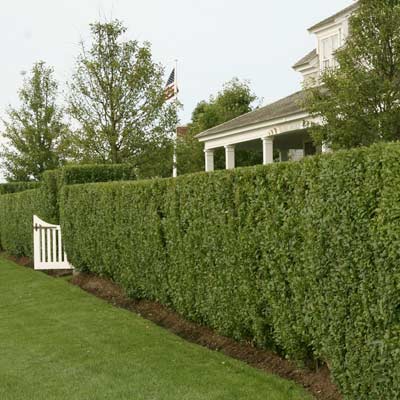
Think carefully about each of these aspects, and you'll get the tree fence you desire.
5. Rows & Spacing
To decide the number of rows, you need to know the available space and the density of your desired screen. Also, you should pay attention to the width of the crowns before determining the spacing between rows.
At least, plant your privacy trees at a 12"-24" distance measured from the plant's center to prevent root crowding. Of course, the type of tree will determine the spacing, as well as how close you want the trees to be when mature.
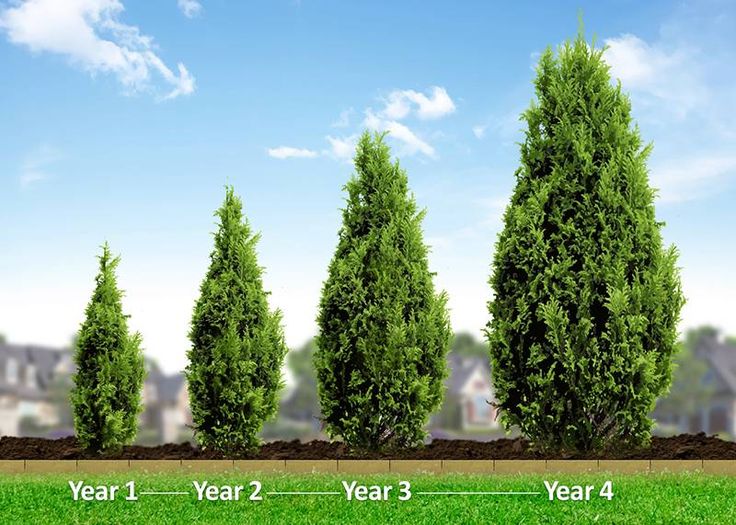
For example, if you choose cedars, junipers, or similar evergreen trees, make sure you leave 6 to 8 feet distance between them.
If you use spruce trees and pines, plant them at a 10 to 12 feet distance apart. And, if your choice is American Arborvitae, it's enough to leave 3 feet between the trees.
6. Mark the Planting Area
The next step is marking the location of your trees using wooden stakes. Put them in the ground at both ends and tie a string between them for a straight line.
Next, put some kind of marker like sprinkler flag on the places your trees should be, based on the desired space you've decided before. So, if the right space for your type of trees is 10 feet, put a sprinkler flag at 10 feet, 20 feet, 30 feet, etc.
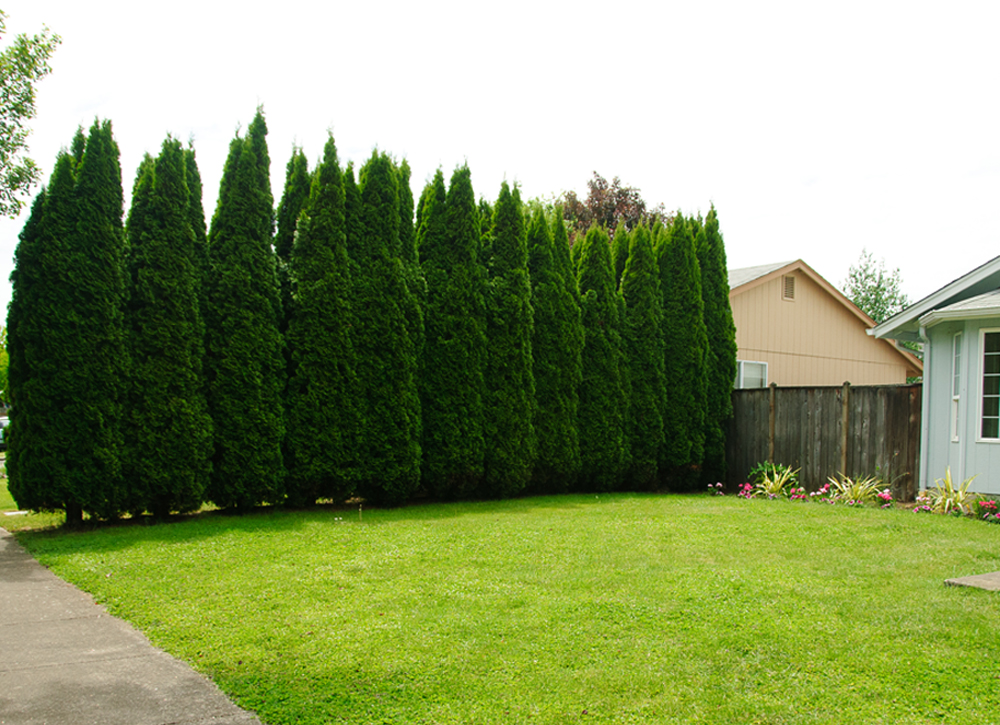
After planting your privacy trees, it's best to let them grow naturally, take care of them regularly, and use good pruning techniques.
Next, we bring you some of the fastest growing privacy trees…
What are the Fastest Growing Privacy Trees?
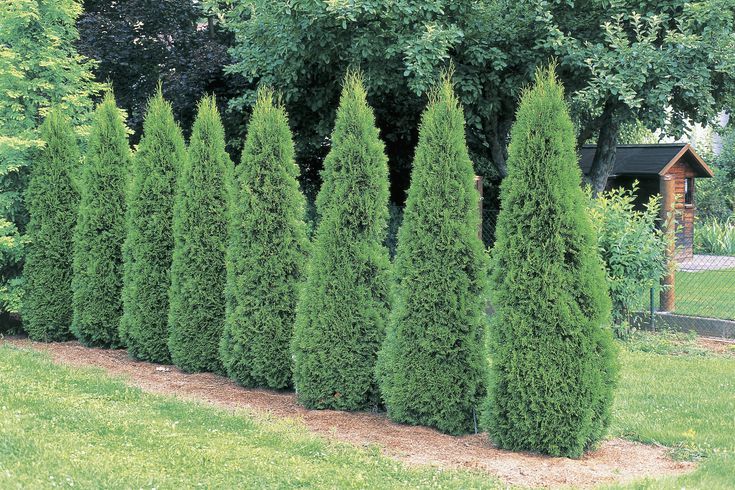
Here is our list of some of the fastest growing privacy trees that are easy to plant and maintain. Some of these trees grow so fast that in just a few years you will have a beautiful privacy tree fence that will make your garden look amazing while giving you all the privacy you need.
Leyland Cypress
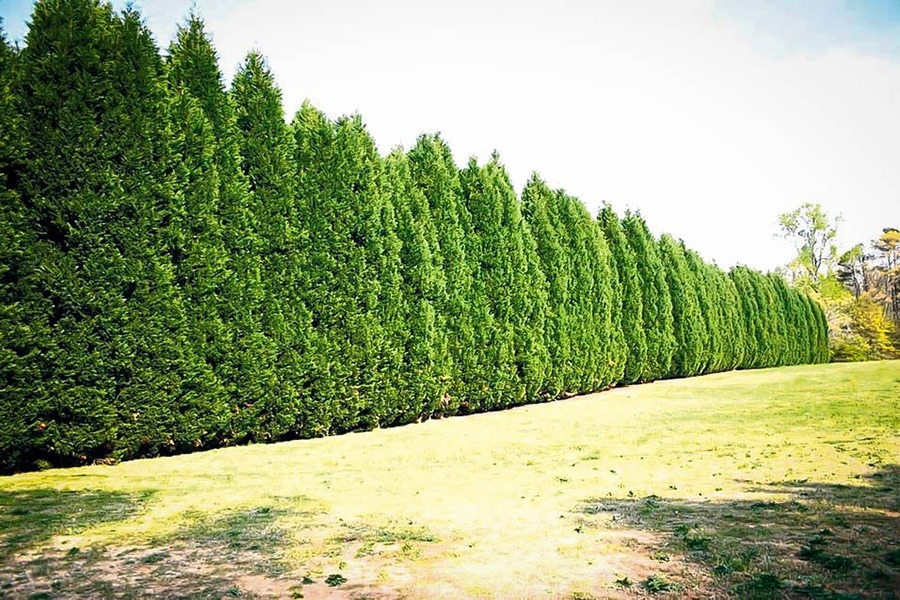
Leyland Cypress is America's most popular privacy tree. This amazing tree can grow up to 5 feet per year.
Its artfully-textured foliage is incredibly soft to the touch - You don't have o worry about unpleasant thorns or prickly leaves. In addition to this, Leyland Cypress stays green year-round, giving you complete privacy at all times.
Your Leyland Cypress trees will look amazing even without trimming. They tend to grow in a uniform, symmetrical shape that provides you with a dense, living wall.
Willow Hybrid
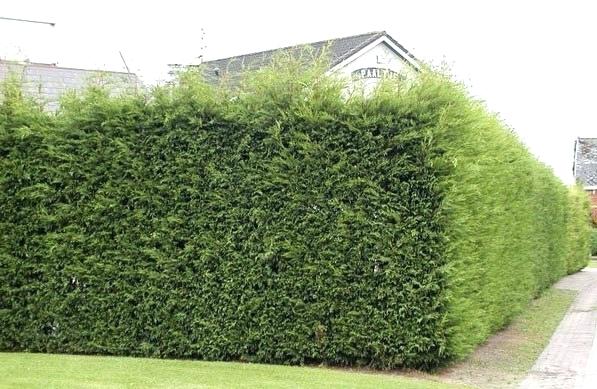
Willow Hybrid trees grow up to 6 feet per year. They can thrive almost anywhere, no matter the climate or conditions. From Canada to Florida, Willow Hybrids will thrive in almost any soil and any climate.
Willow Hybrid requires almost no maintenance. You can simply plant it and forget it! You can rest and let the nature do its job. As it grows up to 6 feet per year, you will have a beautiful privacy fence in no time.
Wax Myrtle

If you are looking for a beautiful and functional shade tree, Wax Myrtle is the right choice for you.
The Wax Myrtle is a perfect solution for smaller landscapes. Its incredibly dense foliage and quick-growing habit make it ideal for hedging, especially when it is nicely shaped and planted in groups.
You can plant several trees in a row to define your property line, or plant only one or two to accent your garden patio.
Wax Myrtles are also great for adding greenery around your back patio or pool to make them incredibly luxurious.
Murray Cypress
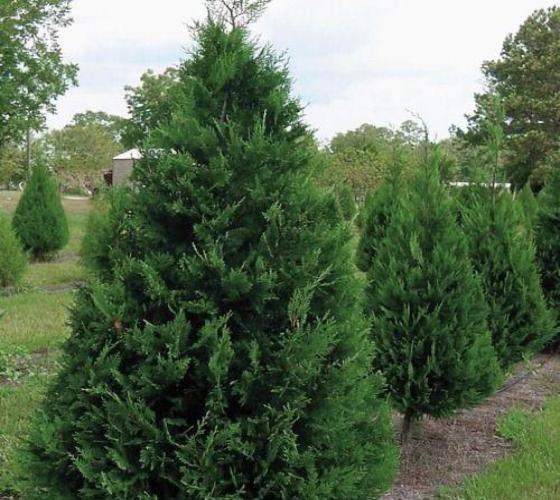
Murray Cypress (Cupressocyparis x leylandi 'Murray') is one of the fastest-growing evergreen trees which can grow up to 4 feet a year. It usually matures at a height of 30 to 40 feet and a base width of 10 feet.
This fast-growing evergreen is perfect for creating privacy on properties that can't be easily screened by using traditional wooden fences.
Planted 5 to 10 feet apart, these trees will form a beautiful privacy fence even more quickly than its relative the Leyland Cypress. It retains its beautiful color year-round, and its limbs are notably stronger than those of the Leyland.
Murray Cypress is a very hardy tree that grows very well in zones 6 through 10, meaning it is capable of thriving in temperatures ranging from -10 degrees to 40 degrees Fahrenheit. It is also capable of surviving in brutal winds and icy conditions.

The low-maintenance Murray Cypress can thrive in poor soils. It can be left to grow naturally, which results in a slightly shaggy look. However, its foliage can be trimmed for more formal appeal.
These trees can live up to 50 years when taken care of, which is a fabulous time if you want to plant them on land you own.
Cryptomeria Radicans
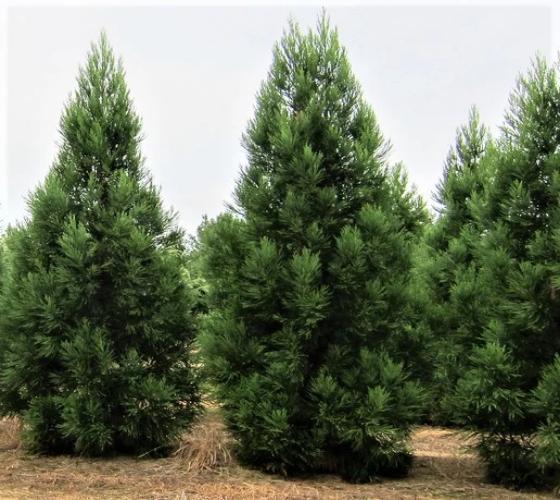
If you are looking for a fast-growing evergreen that will form a perfect pyramid with no trimming, Cryptomeria Radicans is the tree you need.
Cryptomeria Radicans grows up to 3-4 feet per year. It usually grows 12 to 16 feet tall within 5 years of planting.
These trees can reach a height of 40-50 feet, but their spread is only 8-12 feet, making it an ideal specimen for smaller spaces or for a narrow screen where space is limited.
These trees enjoy full sun and will thrive in growing zones 5-9. Cryptomeria Radicans grows best in moister summer conditions so if you live in a cooler area with occasional summer rain, or have irrigation then this is an ideal tree for your garden.
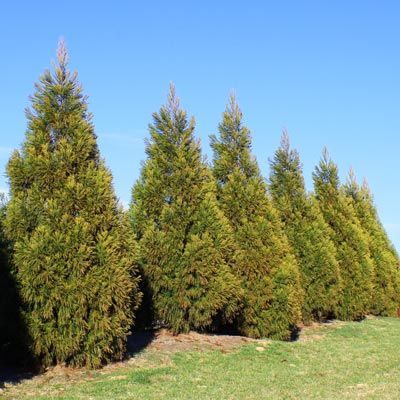
These trees can be trimmed to the desired shape. If left untouched, they will grow in a pyramid shape.
Next, we discuss what privacy trees grow best in shade…
Privacy Trees That Grow in The Shade
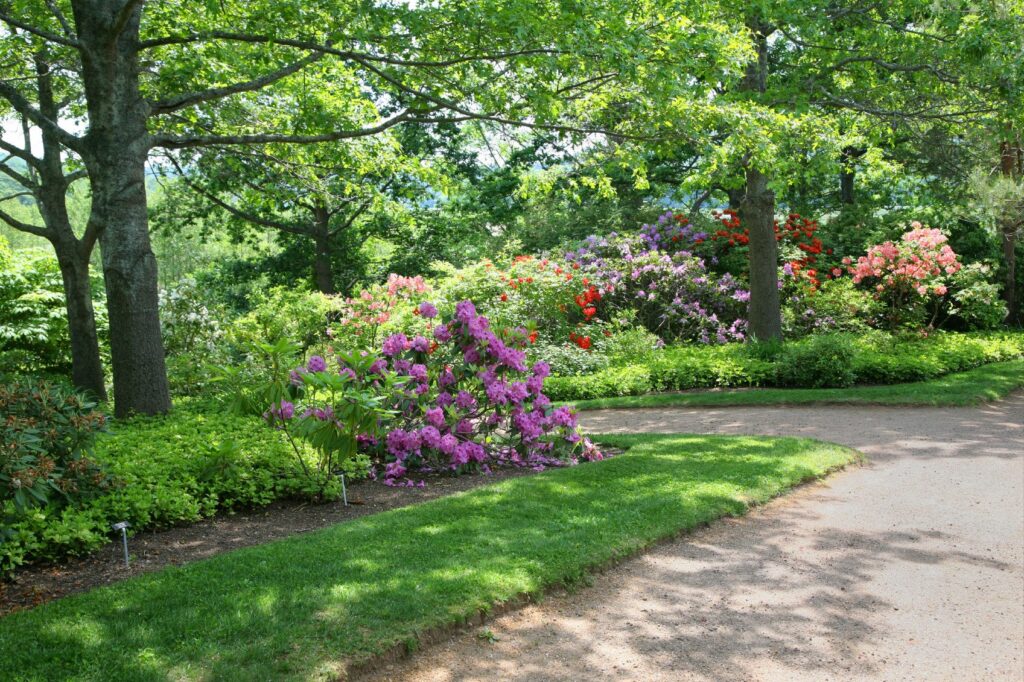
Finding a privacy tree that can grow in full shade can be a bit tricky. Most plants crave as much sun as possible so that their leaves can perform photosynthesis.
There are, however, some privacy trees which have adapted well enough to tolerate less light. Without any ado, here are our top privacy trees that can grow in shady locations:
Teton Firethorn - Pyracantha Teton
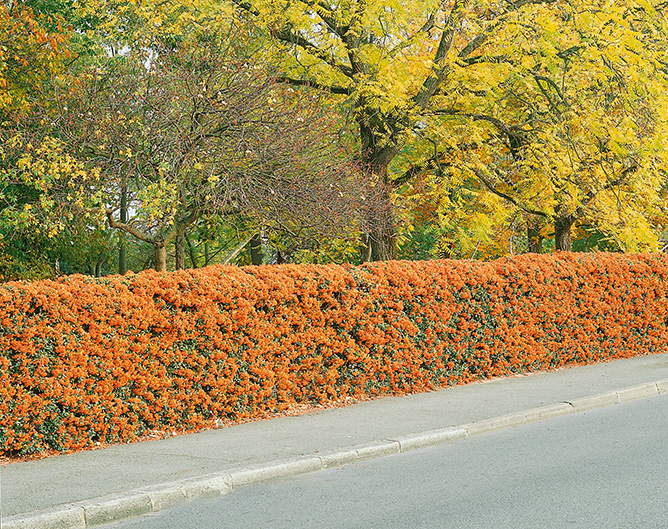
Teton Firethorn makes a gorgeous evergreen hedge with year-round color and interest. It features reddish-orange fruits that can add color for the fall and part of winter.
Teton Firethorn can be grown in locations that provide full sun to partial shade. Of course, the hedge will produce much more flowers and fruit in sunny locations.
As the name implies, Teton Firethorn is also covered in sharp thorns that make it an even more effective privacy hedge.
Thuja Green Giant
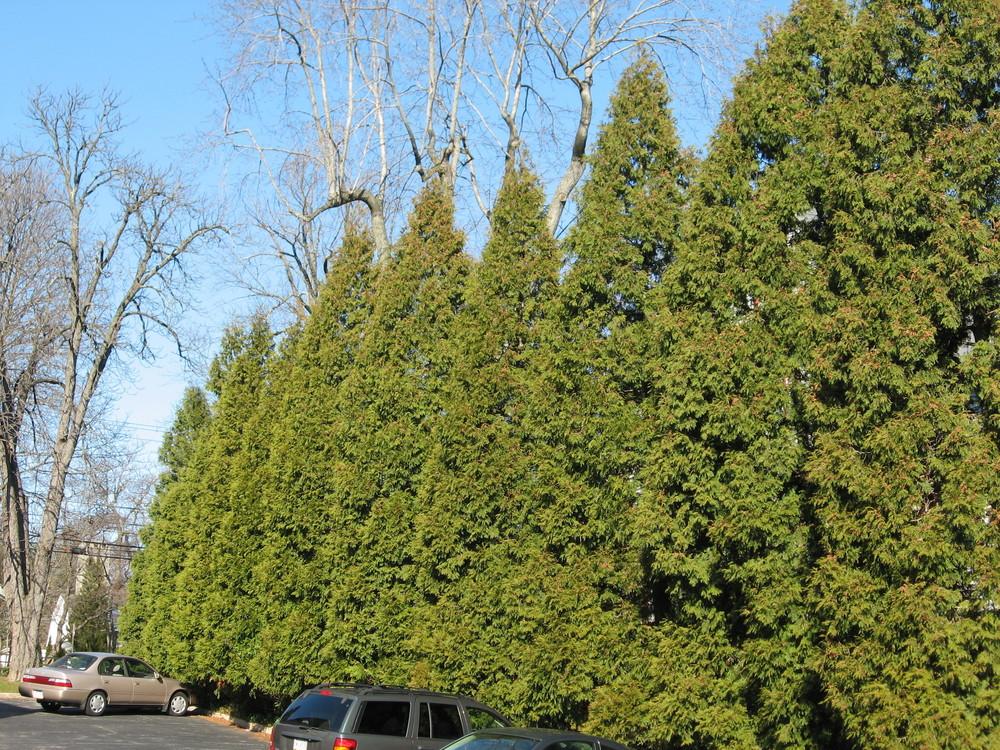
Thuja Green Giant trees are sturdy and adaptable evergreens, with lush green leaves year-round and impressive annual growth.
These trees can grow up to 3 feet per year until maturity in ideal growing conditions. Their ultimate height is 50-60 feet tall and their width can be up to 12-20 feet.
Thuja Green Giants are highly adaptable and can grow well in the spectrum from full sun to partial shade.
Thuja Green Giants are not picky when it comes to soil. They can grow well in a moist but well-draining soil. However, they are very sensitive to salt, and as such should not be planted near roads that get a lot of traffic.
On average, Thuja Green Giants live for up to 40 years in ideal growing conditions.
European Beech - Fagus Sylvatica
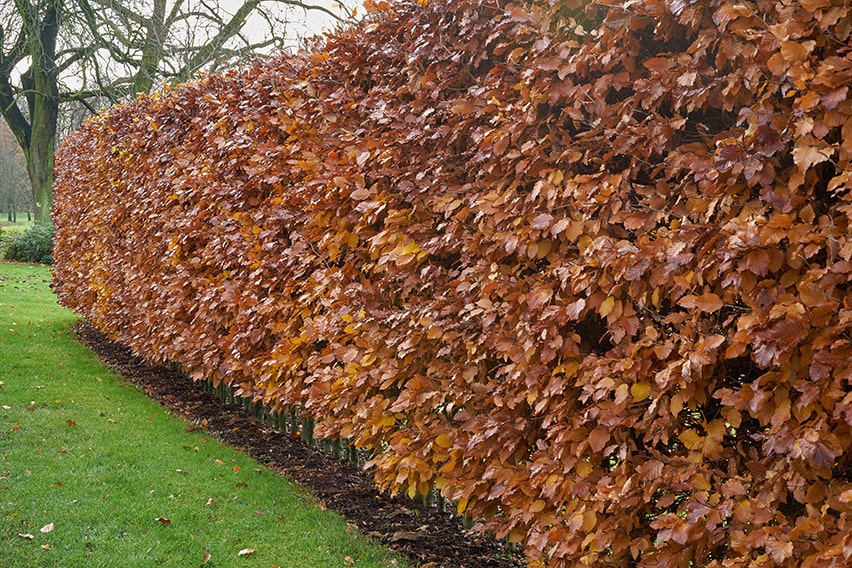
European beech is a beautiful choice as hedging plant for shade. With lush, green foliage in summer, nice fall color, and a unique copper look in winter, it has been described by many experts as the finest specimen tree available.
This tree can be grown in full sun to full shade, making it wonderfully versatile for all kinds of locations. It prefers a dry or moist shade but does not like waterlogged or poorly-draining soil.
European Beech has an attractive upright-oval to rounded-spreading crown when left alone and can be trimmed to any desired hedge style.
European Beech branches are smooth, graceful, and lovely. Even when branches are, they are smooth, silvery, and beautiful.
Next, we move onto privacy trees planting tips…
The Process of Planting
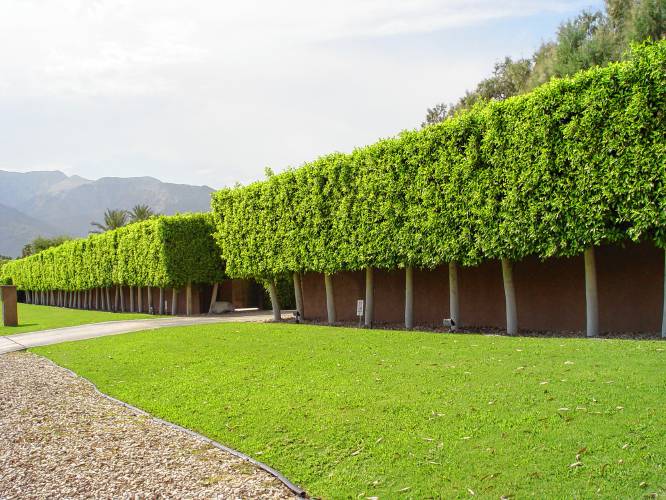
Dig a hole 2-3 times wider than the root ball of the privacy tree you've chosen, and as much high as it is. Be careful not to touch it and turn the tree in the desired direction. If there's a burlap, remove it.
Backfill the hole and make sure the trunk stays straight all the time. Tie a stake loosely to the trunk, or several if the tree is larger, and water it every day, or according to the plant's demands.
Even though every tree takes time to grow and become part of a natural privacy fence, you can also consider choosing fast-growing trees if you want to have a privacy ASAP.
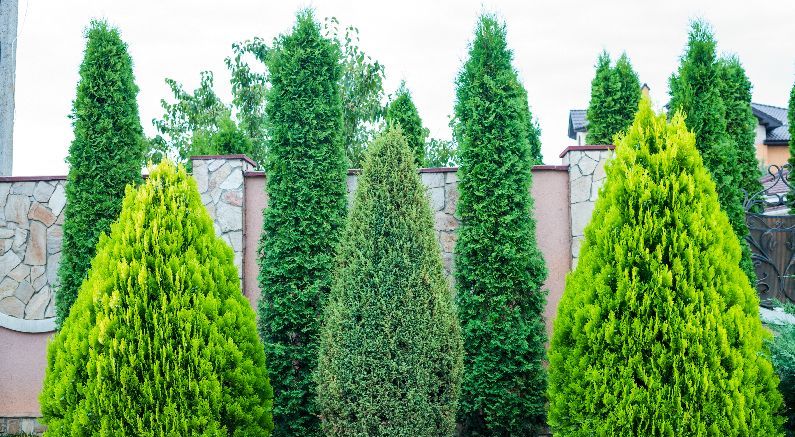
Here you can watch this additional video on how to create a perfect privacy hedge:
Summary of Best Ways to Plant a Privacy Tree Fence
Thanks for reading! Feel free to share your ideas and opinion in the comments section.
 |
 |
 |
 |

About Robert Fox
Rob Fox is a former hydro worker who used to teach self defence in Miami for 10 years. He's currently enjoying his retirement, playing cribbage and golf with his buddies, locksmithing and home security in his spare time. Rob is an avid reader, and has even written a few books on the subject of self defence.
Thoughts on "How to Plant a Privacy Tree Fence"
 |
 |
 |
 |
Check These Out
You can Get FREE Gifts. Furthermore, Free Items here. Disable Ad Blocker to receive them all.
Once done, hit anything below
 |
 |
 |
 |